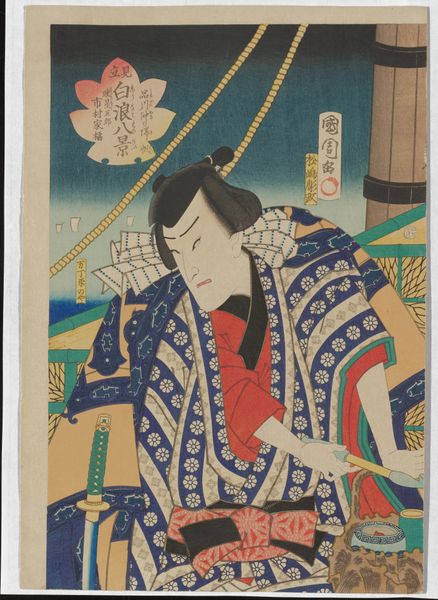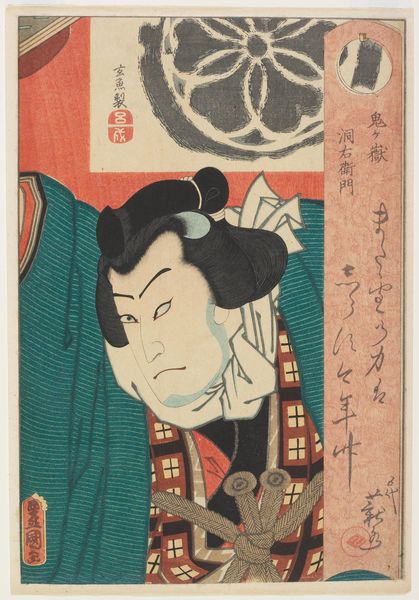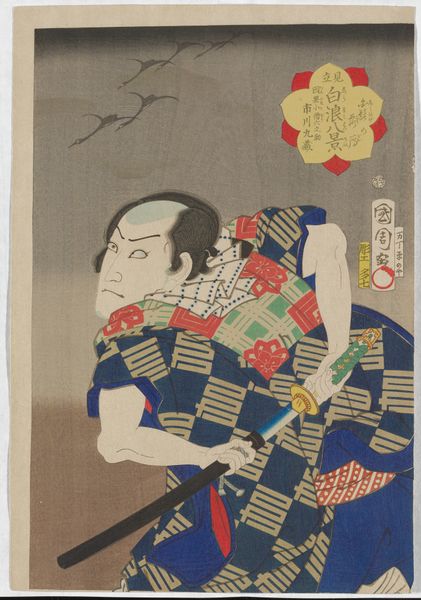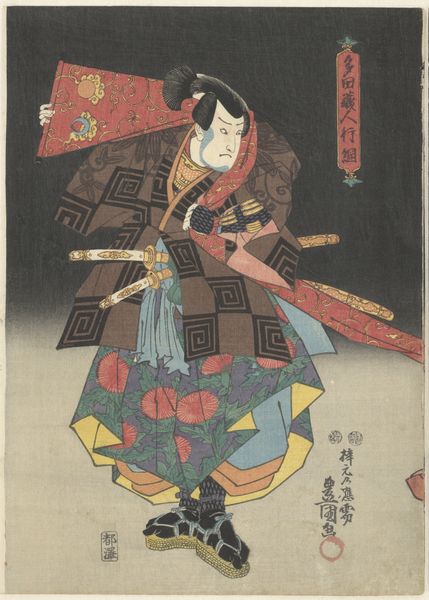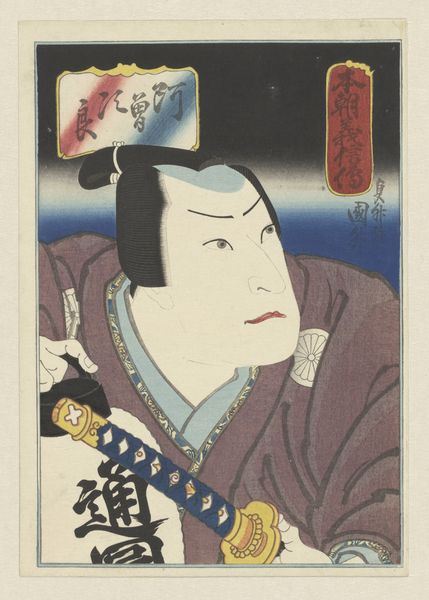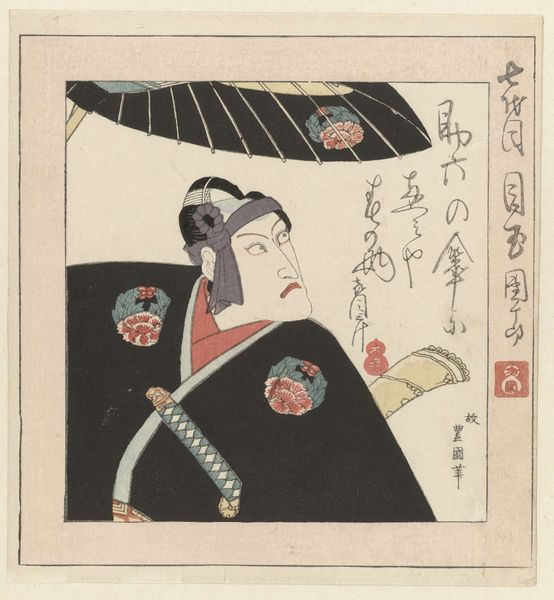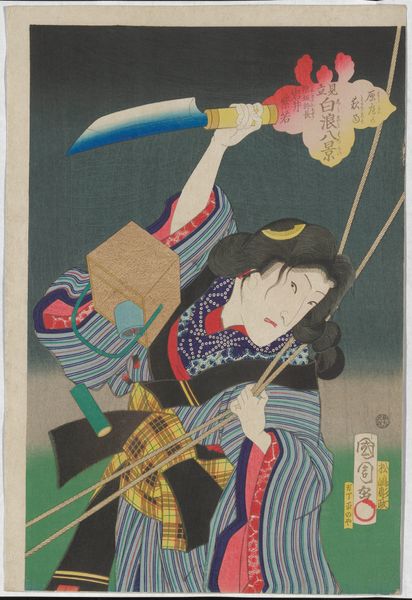
Twilight Snow of the Hakone Mountains- Actor Bandō Hikosaburō V as Jintō Tokujirō Possibly 1865 - 1867
0:00
0:00
print, ink
#
portrait
# print
#
asian-art
#
pop art
#
ukiyo-e
#
japan
#
ink
#
naive art
Dimensions: 15 1/2 × 10 1/2 in. (39.37 × 26.67 cm) (sheet, vertical ōban)
Copyright: Public Domain
Curator: This captivating print, held here at the Minneapolis Institute of Art, is titled "Twilight Snow of the Hakone Mountains- Actor Bandō Hikosaburō V as Jintō Tokujirō". It’s attributed to Toyohara Kunichika, and likely dates from the late 1860s. Editor: The first thing that strikes me is the figure's stoic expression against that night-sky backdrop; very somber yet theatrical. And what about that intricate pattern on his robe – you can almost feel the texture! Curator: Indeed. The print gives us insights into the popularity of Kabuki theater and the woodblock print industry, essential elements of the Edo period's urban culture. Prints like these acted almost as celebrity endorsements. Editor: Focusing on the materials and the making: consider the layered process. Each color signifies a different block, hand-carved and meticulously registered to build up this final image. You get a real sense of labor there, and access to artistic representation for popular audiences. Curator: Exactly! Prints like this disseminated narratives widely. Here we see Bandō Hikosaburō V, a star of the stage, playing Jintō Tokujirō in a moment of dramatic tension, cleverly marketed to further boost ticket sales. It’s a potent blend of commerce and art. Editor: I am also fascinated by his costume. The hat almost feels sculptural with its visible weaving pattern. I see a tension between art and the commercial— where is it going to be hung? At the theater, in the home? I wonder what purpose this print actually served? Curator: Considering the print in circulation—who had access to it? It offered access to a celebrity that maybe only wealthy merchants or samurai actually could meet. Its creation and distribution relied on collaborative networks, bringing artisans, publishers, and actors together. Editor: This makes me consider how prints moved—and how they allowed people of different economic classes to access an aesthetic world normally reserved for others. What happened when they wore away? Did they just throw them out? They had no perceived value, I imagine? Curator: Well, as the medium of prints became cheaper through technological advances and an organized supply chain, so did their perception, as merely commodities and consumables, influencing contemporary consumer culture. Editor: I agree. The layered approach offers a narrative; each element adding depth. It urges us to ask fundamental questions regarding artistry and production within Japan's societal and economic complexities. Curator: Absolutely, considering its historical value and how Kunichika was marketing imagery from a popular Kabuki play shows us his keen ability to both capitalize and offer access to popular media! Editor: Thinking about process and context reveals much about Japanese history. Fascinating.
Comments
minneapolisinstituteofart almost 2 years ago
⋮
Since the 17th century, The Eight Views–originally referring to scenic spots around the Chinese Xiao and Xiang Rivers–has been a well-established theme in Japanese art. Here, the eight locales are taken from famous places in the city of Edo (present-day Tokyo) and are juxtaposed with popular actors in the roles of well-known thieves and robbers. Kabuki plays on the underworld were popular during the mid-19th century, especially during the hot summer months when this series was put on the market, as the storylines were meant to give viewers a chill.
Join the conversation
Join millions of artists and users on Artera today and experience the ultimate creative platform.
